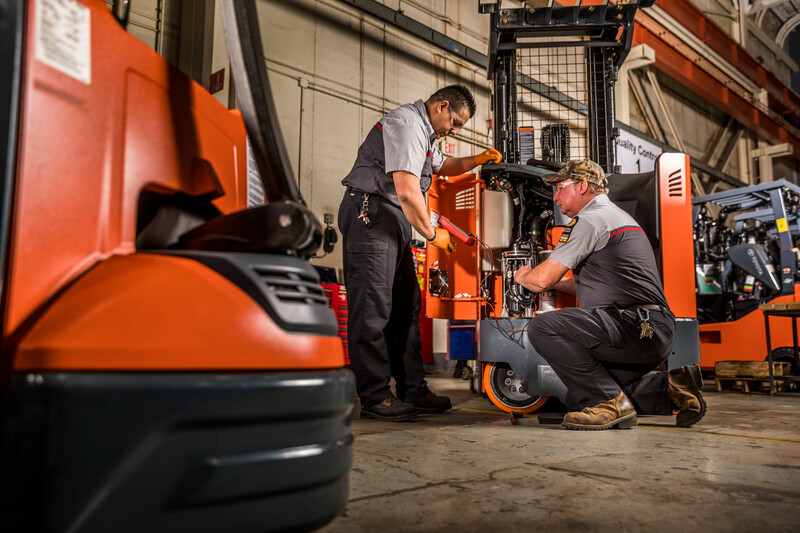How to Avoid Used Forklift Ripoffs
Whether you’re looking for a used forklift online or going directly to the seller, you’re in danger of being a victim of “ripoff artists.” Knowledge is your best defense against ripoffs. Here are some tips on how to avoid used forklift ripoffs.
1) Is the hour meter reading accurate?
Almost all forklifts have hour meters to help keep track of usage. Hour meters are invaluable for service maintenance, but they are not good indicators of a forklift’s actual hours of use. Many forklifts just have four-digit hour meters, which reset to “0000” after passing “9999.” Others have five-digit meters, which may be accurate on newer forklifts, but are still unreliable indicators of actual usage. Sometimes they become faulty or have been deliberately disabled. How can you know that an hour meter that reads “12,864” has actually been used for that number of hours? You can’t. If a dealer uses the hour meter reading as a major selling point, beware.
2) Was the forklift really manufactured when the dealer says it was?
Unlike automobiles, whose styles change virtually every year, used forklifts from the same manufacturer often look identical even though one maybe five years older than another. Don’t take a dealer’s word for it when they tell you the year of manufacture.
3) Is the data plate up-to-date?
The data plate on a used forklift should offer extremely important information about the forklift’s capacity. By law, whenever modifications are made to a forklift that can alter its carrying capacity, a new or additional data plate must be attached to the forklift. Many forklift owners fail to update their data plates, though. It’s vitally important that you know what a used lift truck’s actual carrying capacity is and how the capacity is affected by forklift attachments or modifications.
4) Has the forklift chassis been modified?
If you see signs that a forklift chassis has been modified in any way, beware. If the forklift is still under warranty, the modification will most likely nullify the warranty. If it is not under warranty, the modification almost certainly will have had an effect on the lift truck’s stability. One of the most common modifications is to add an extra counterweight. While this theoretically gives the lift truck greater lifting capacity, it also has a negative effect on its stability and is a sign that the owner has been putting too much stress on the vehicle.
5) Do you know the used forklift’s history?
Regardless of what the hour meter says (assuming it’s accurate), a used forklift that has been used for light duties in a warehouse is probably going to be in better condition than one that has been pushed to capacity or beyond in a manufacturing plant. If you’re buying a used forklift from a dealer, try to find out where it comes from. If you’re buying it from an owner, inspect their premises and try to find out if they are the original owner.
Finally, it’s important to know who you’re buying a used forklift. If it’s a dealer, how long have they been in business? If you’re buying online, make sure you buy from a reputable source that also has a traditional “brick and mortar” dealership.
For more information about buying used forklifts, read Used Forklift: How, When, and Who to Buy From.

